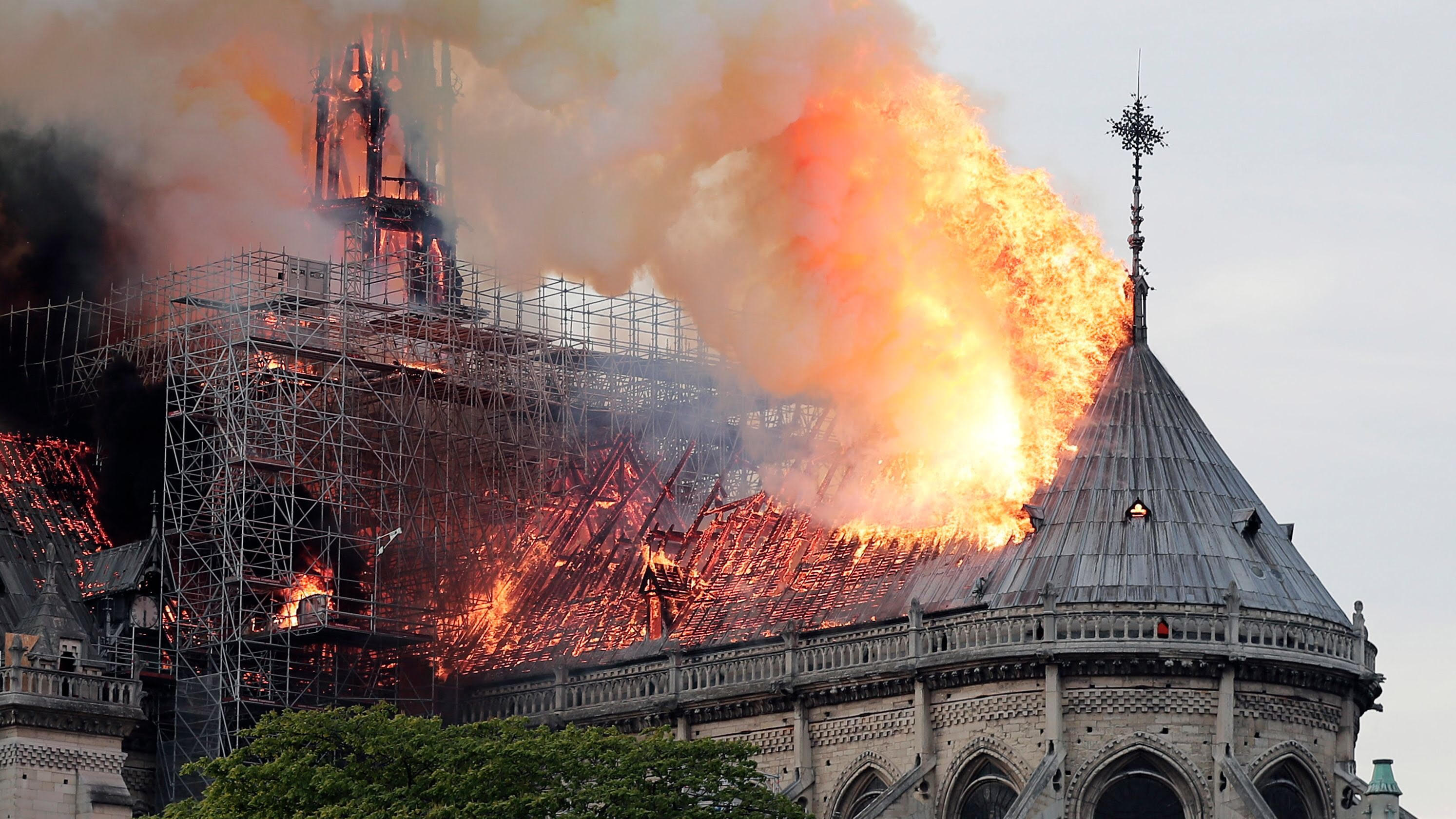ABLAZE: In the wake of the Notre Dame fire, millions of dollars in donations are met with fierce controversy.
By Guinivere Kimber, Staff Writer
Almost 860 years of French history were lost forever on April 15, 2019 when a structure fire erupted below the roof of the Notre Dame Cathedral in Paris, France. Built in the 12th century, the medieval church was undergoing restoration work at the time the fire started and the exact cause is still unknown. The upper levels of the church were lit ablaze as the French citizens watched anxiously, firefighters worked tirelessly to save the beloved piece of history, and worried onlookers sang the prayer song Ave Maria, standing in awe as the towering steeple collapsed under the heat.
Fortunately, the brave men and women battling the blaze were able put out the fire, keeping the damage relatively localized. As soon as reports of the damage were released, including a gaping hole in the ceiling with ash and soot coating the inside, the donations flooded in. According to the Washington Post, within days $700 million was donated, and by late April between $835 million to $1 billion was donated. Those who donated include François-Henri Pinault, whose wealth stems from brands such as Gucci and Yves Saint Laurent, and Bernard Arnault, the wealthiest man in Europe and the head of LVMH Group (which owns luxury brands such as Givenchy and Louis Vuitton).
While many were grateful for the outpouring support for the Notre Dame, the donations were met with their own flames when many questioned whether the money was being put to the right use. Others pointed out that if the donor were to pay their fair share of taxes, the government would have enough revenue on its own to rebuild Notre Dame. The criticism went as far to denounce the donations as mere boosts to the reputations of those who gave.
France is also facing criticism from its Yellow Vest protesters, a grassroots movement for economic justice that has been protesting for 22 consecutive Saturdays since late 2018. “If they can give tens of millions to rebuild Notre Dame, then they should stop telling us there is no money to help with the social emergency [in France],” says General Confederation of Labour chief, Philippe Martinez. This “social emergency” is France’s rising poverty rate, where in the grand city of Paris, over 40 percent of residents live below the poverty line and only the wealthy can afford to live in the city’s historic center according to the Washington Post.
Nick Tedesco, senior financial advisor at J.P. Morgan Private Bank, believes that there is too much money being reserved for philanthropy that could be put to a better use. Notre Dame awoke an “otherwise dormant philanthropic capital” that should continue to be drawn from, said Tedesco. Donors like Pinault and Arnault shouldn’t shy away from their current criticism but rather “own it,” as it shows an attempt to find better solutions to a larger number and variety of issues.
Despite the flaming controversy, one thing seems to be agreed upon among those sharing their opinions on Notre Dame’s new benefactors: if millions of dollars can be raised for the cathedral in a matter of days, imagine how much can be raised if donors turn their attention to other causes.

